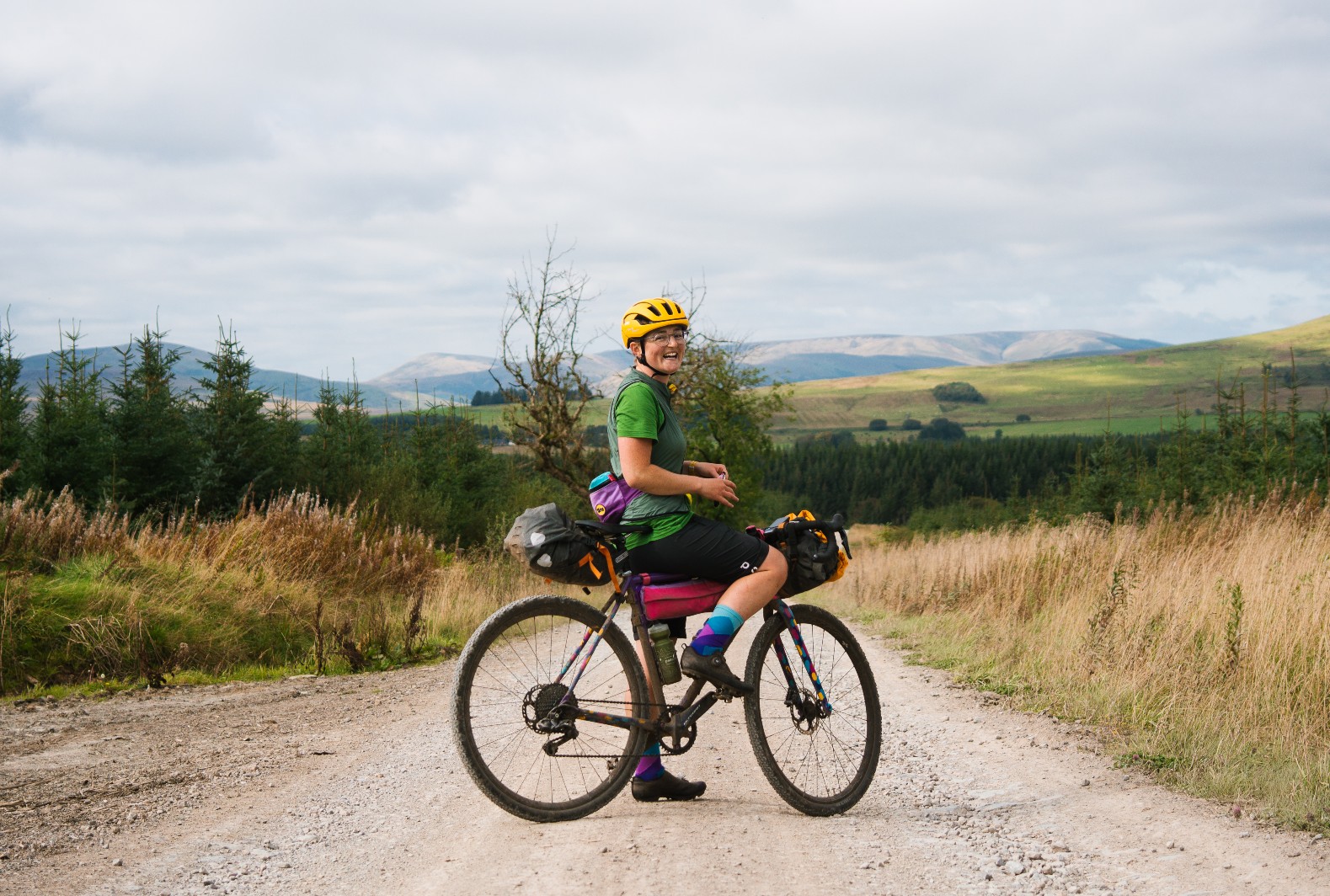Heading out into the wilderness is one of the best parts of mountain biking, but on the flip side you’ll need to be self-reliant when it comes to looking after yourself and your bike, because you’re likely to be further from help.
Here are our 20 essentials for your epic mountain bike rides, from crucial tools to handy spares.
Remember that if you ride with friends, having the kit needed to help yourself can also be handy for others, though with some things such as derailleur hangers and chain links you’ll need to check cross-compatibility.
As always, having the kit with you is only half the job: you’ll need to know how to use it too, whether that’s applying first aid, using a shock pump, or fixing a tubeless puncture.
1. Tubeless repair kit
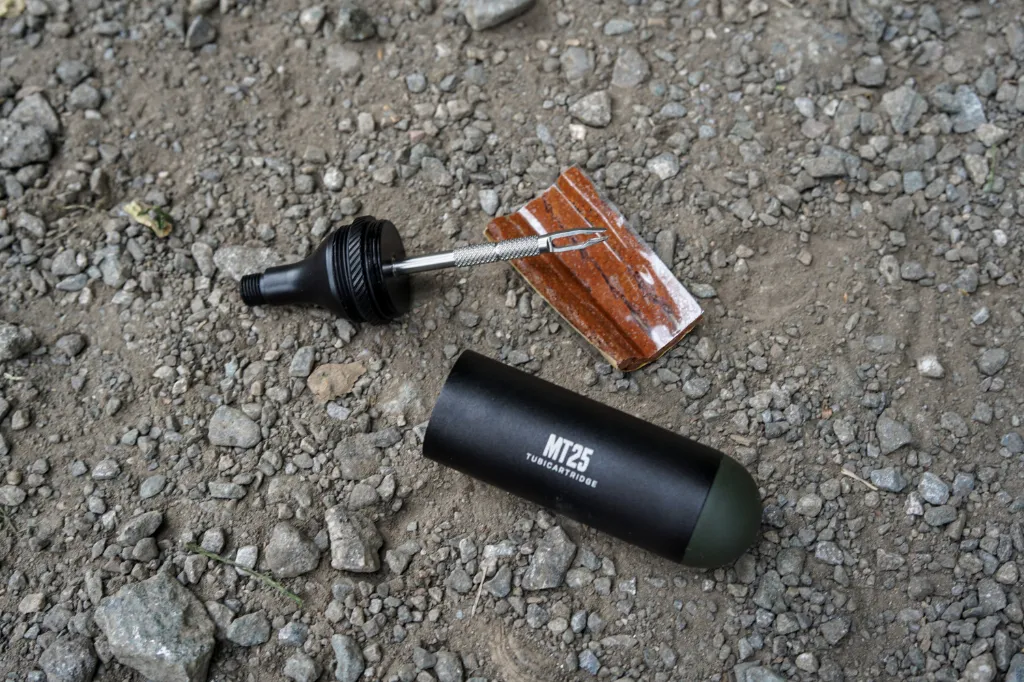
One of the most common mechanical issues on the trail is a puncture, whether that’s an uninvited shard of glass, thorn, sharp rock or a snakebite puncture from dinging the rim.
If you’re running your bike tubeless, as most mountain bikers do these days, then having the appropriate kit to fix this easily can save you a sticky mess.
Tubeless plugs are the mountain biker’s best friend, and can be easily applied to a hole in the tyre using a specialist plug tool to seal the hole ready for reinflation.
Larger cuts or slices might not work with plugs, so you’ll need to remove the tyre to install a tyre boot and tube. Some slices can also be stitched.
Many brands now offer complete kits for tubeless repairs, including reamers, plugs and application tools, which can be kept tucked away until you or one of your riding pals needs it.
2. Spare tubes
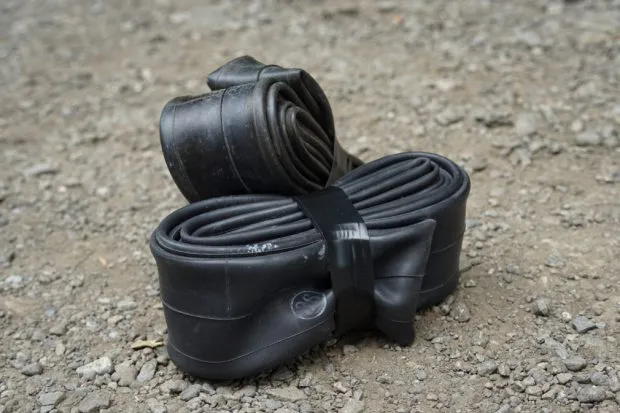
If your tubeless nightmare is beyond repair, or if you need to fix a punctured inner tube, it’s probably time to pop a replacement tube in there. Make sure you’re carrying the right size inner tube for your wheel size and tyre width.
It may sound like a lot, but for big rides it’s well worth taking two spare tubes, as double flats do happen.
3. Patch kit
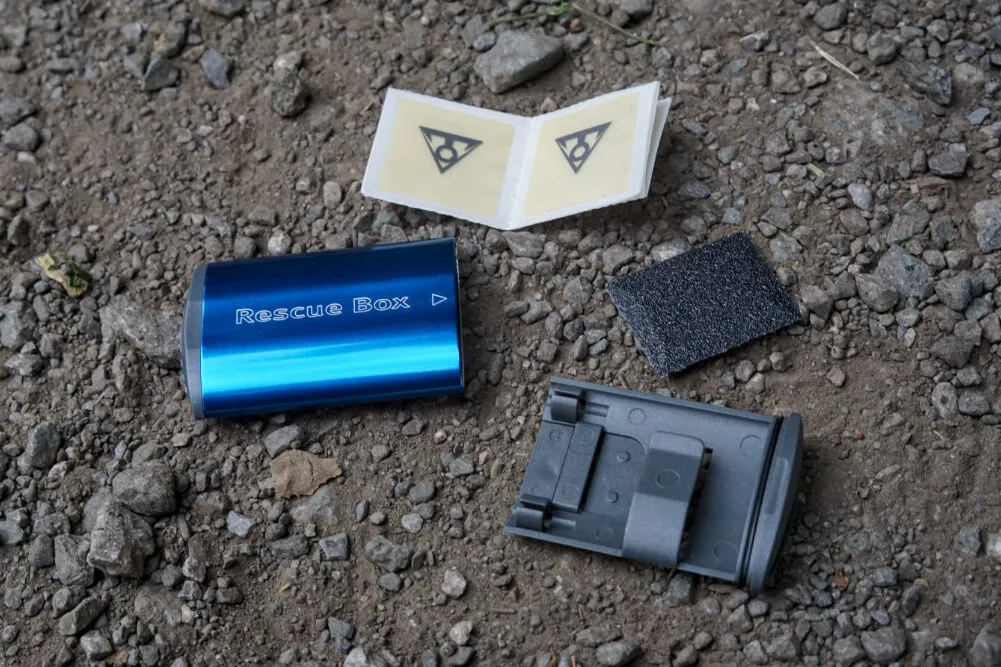
These small kits can be a lifesaver when it comes to being able to reuse a punctured tube, and can sometimes even be used for other applications such as patching the inside of a tyre.
Choose between a traditional setup including a vulcanising agent or pre-glued stick-on patches.
4. Mini tyre pump
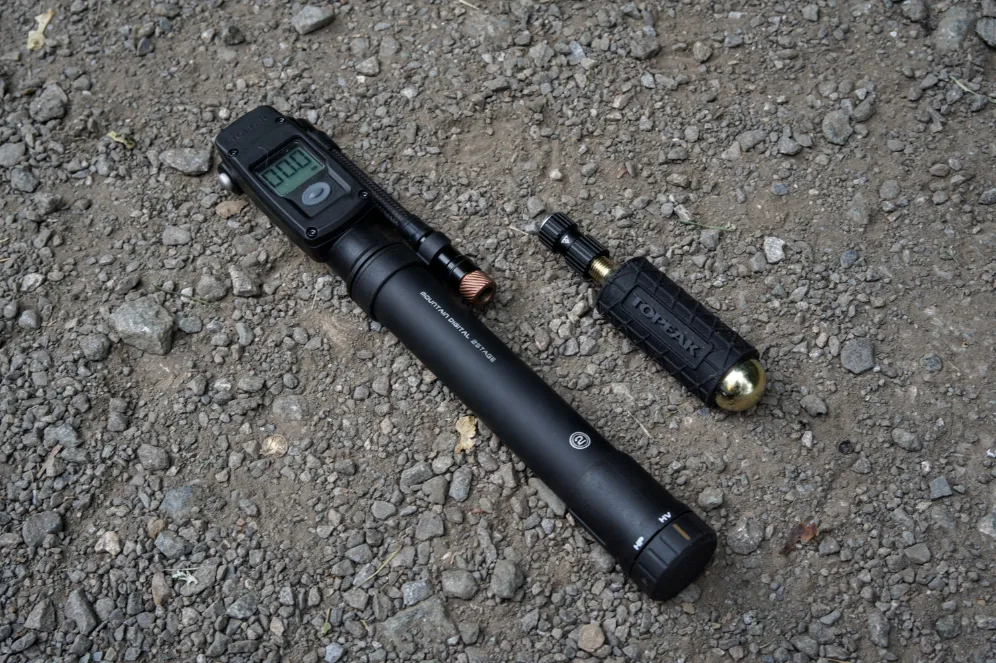
Whether you’ve ‘burped’ a bit of pressure out of your tyres or have had a puncture, a tyre pump is key to getting you back to that sweet-running optimum. Look for a high-volume option for mountain bike tyres, rather than a high-pressure pump which works better for narrower road bike tyres. An option with a pressure gauge can also be really handy.
Another option is a CO2 inflator with cartridges. Though the sudden release of pressure can be more useful for seating stubborn tyres, and they tend to pack down smaller than a pump, these cartridges have a finite use, whereas a pump can be used again and again for years to come.
5. Multi-tool
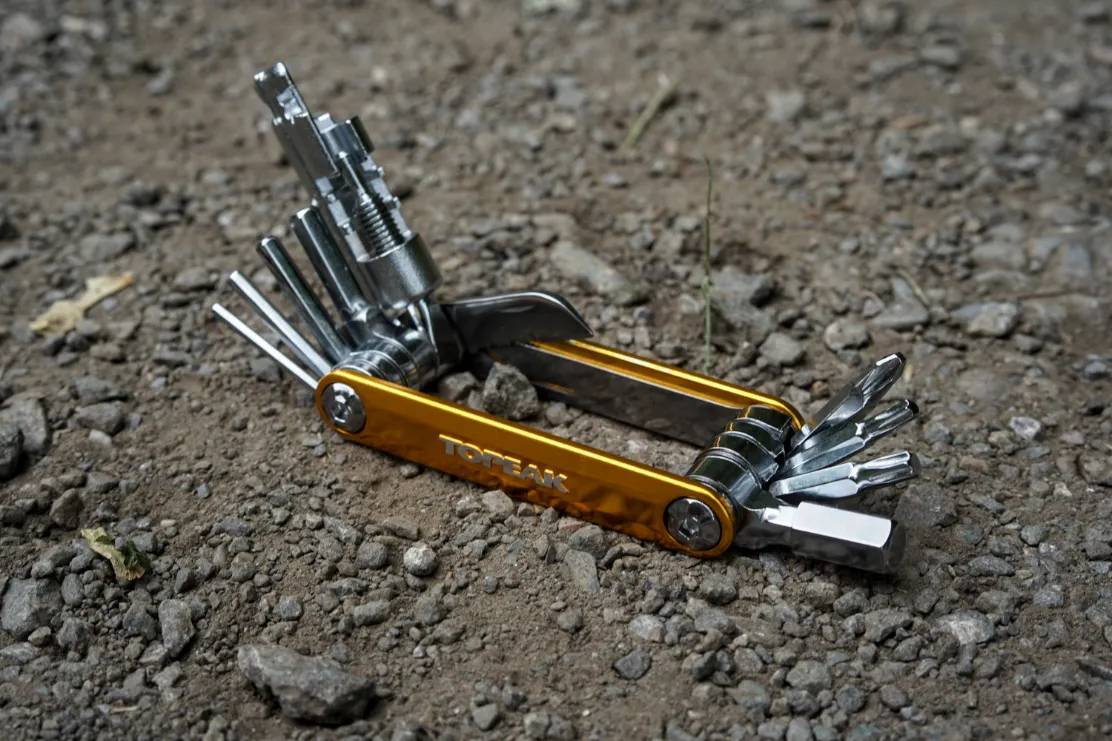
From tightening the seatpost clamp on a slipped seatpost to securing cleat bolts, adjusting bar angles to breaking chains, securing rattling bottle cage bolts to unscrewing a thru-axle; the humble multi-tool is a cycling essential with 101 uses.
Spend a little more on a quality multi-tool that includes a built-in chain tool, a T25 torx, flathead and Philips screwdrivers in addition to Allen keys. Some bulkier multi-tools even include pliers and wire cutters, which can come in handy.
An alternative is a ratchet tool, which can be supplied with multiple bits in addition to the other features you’d expect from a multi-tool such as a chain tool. These can be extra handy for using in tight spaces, such as for attaching bottle cages, or if reassembling a bike after travel.
6. Tyre lever

A real essential when it comes to wrangling stubborn tyres off of rims, and back on again, a sturdy tyre lever can help you make light work of tyre-related issues.
Some neat tyre levers are built into other tools, such as chain pliers.
7. Shock pump
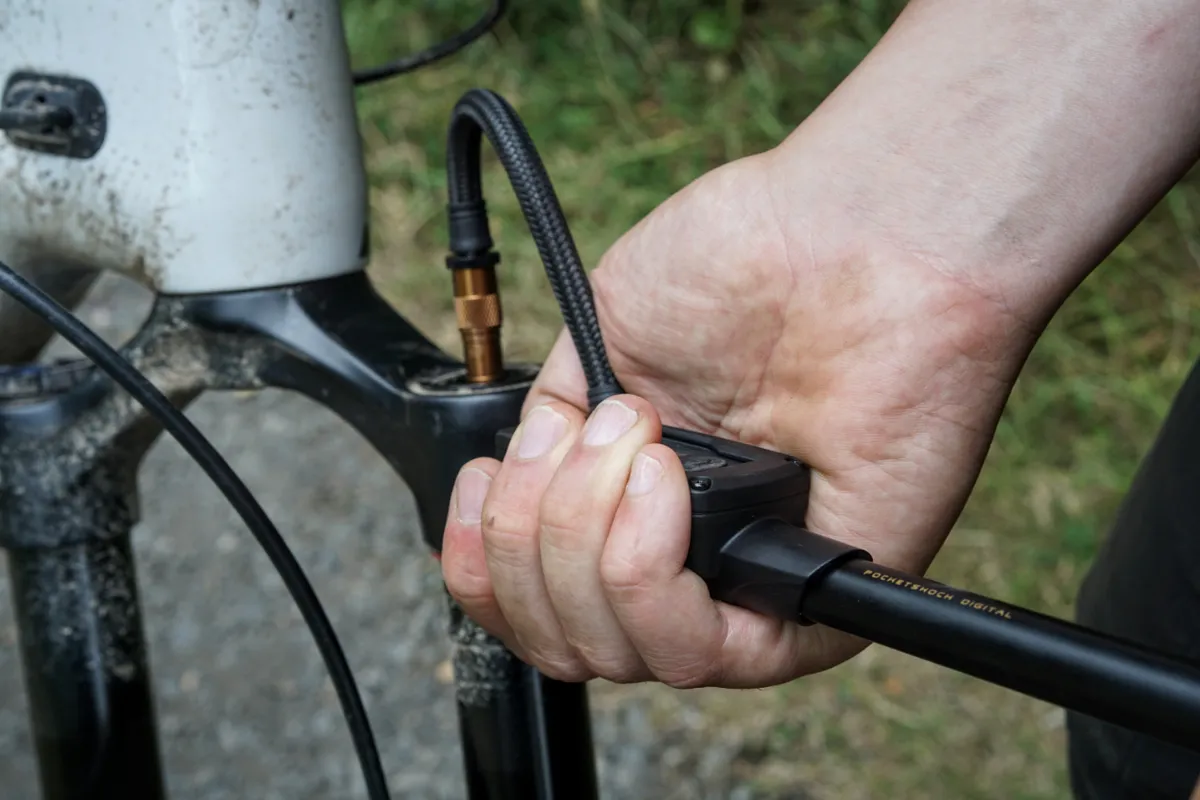
While you’re unlikely to pack one for trail centre riding or short loops from home, if you’re heading out on a big-day ride or bikepacking trip a shock pump can help you to fine-tune your suspension as you go.
Heading up into the high mountains? Elevation has an effect on your suspension too.
8. Chain lube
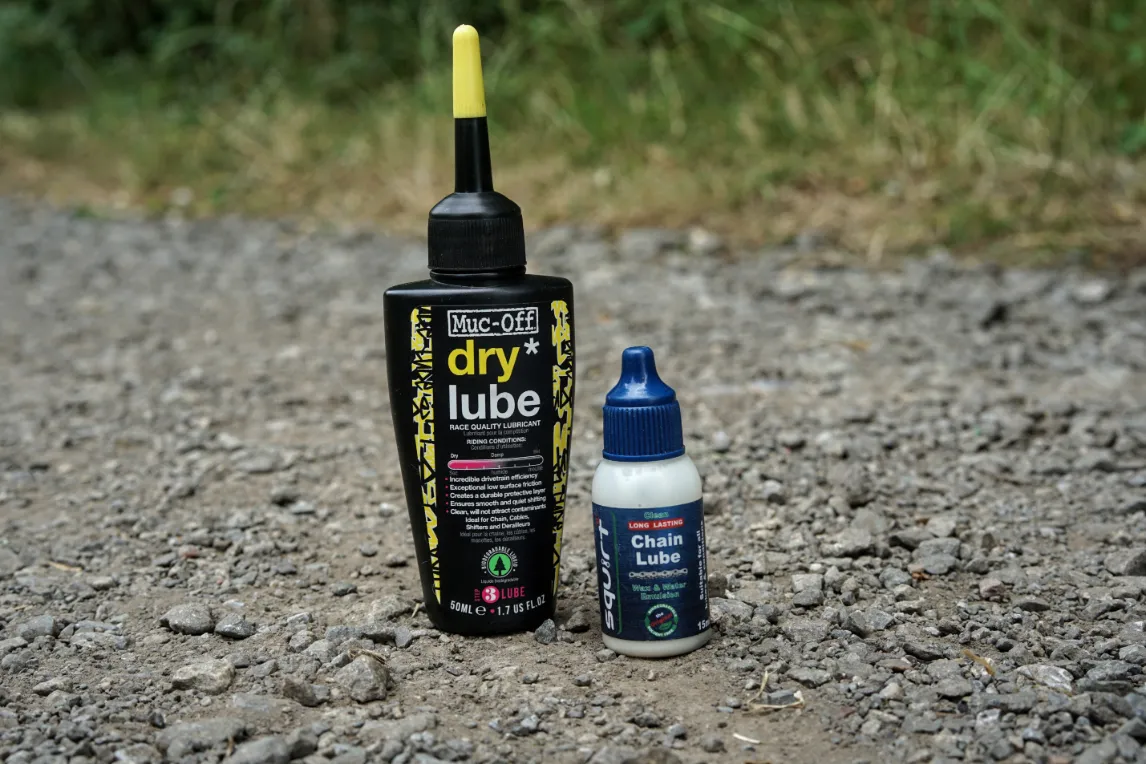
If there are river crossings or potential downpours on the menu, you can save yourself the aural agony of a squeaking chain by packing a miniature bottle of chain lube for mid-ride reapplication. This comes in particularly handy on multi-day rides to keep things running smoothly – and silently!
9. Sun cream and lip balm
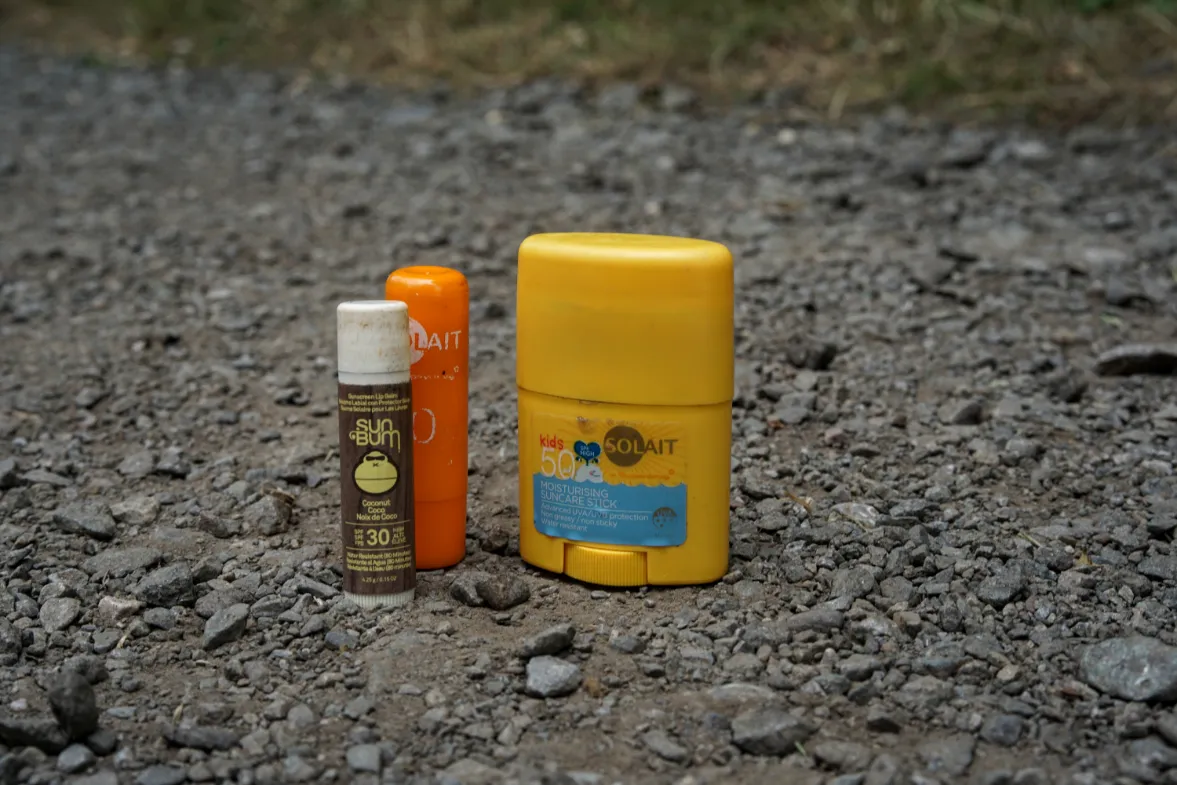
Keeping safe on the trail goes beyond kneepads and first aid training: exposure to UV rays can be damaging in the long term, so make sure you slather on that SPF sun cream before you set out, and reapply as necessary on your ride.
Dry, chapped lips are also no joke and can go hand-in-hand with big rides, so using an SPF-rated lip balm is a wise idea.
10. Phone
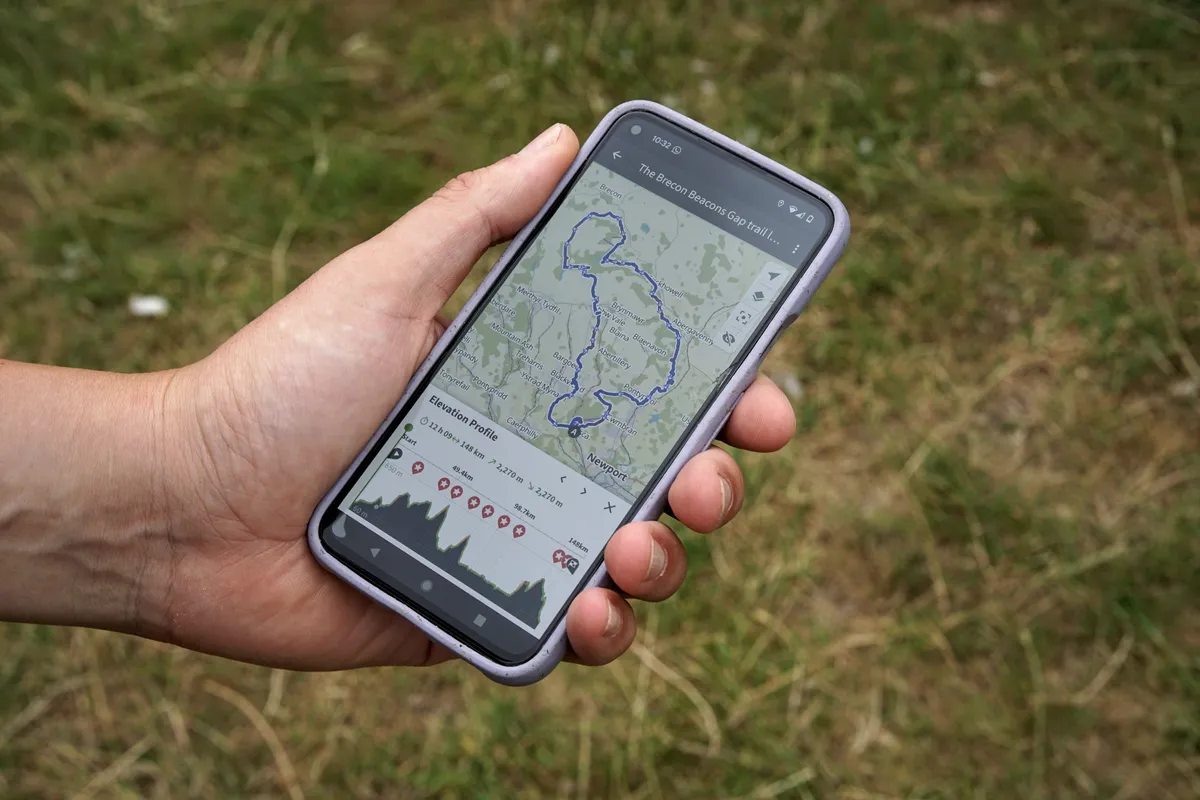
An obvious thought perhaps, but are you making the most of your phone’s capability while out riding?
There are some great ride recording and navigation apps out there, but also tools that can really help in the event of an emergency.
The app what3words can be used to help you accurately share your location, for example for emergency services or to pinpoint a meeting spot.
Some navigation apps also enable you to download your route for offline use, which is a good idea, especially if you’re heading to an area where phone signal may be dodgy.
A phone won’t be much help if it’s out of battery, so make sure it’s charged before you set off, or consider packing a rechargeable battery pack if it’s prone to losing charge fast.
You may also choose to use a GPS bike computer for navigation instead of your phone, which can be easier to read on your bars and help preserve phone battery.
11. Packable layers and waterproofs
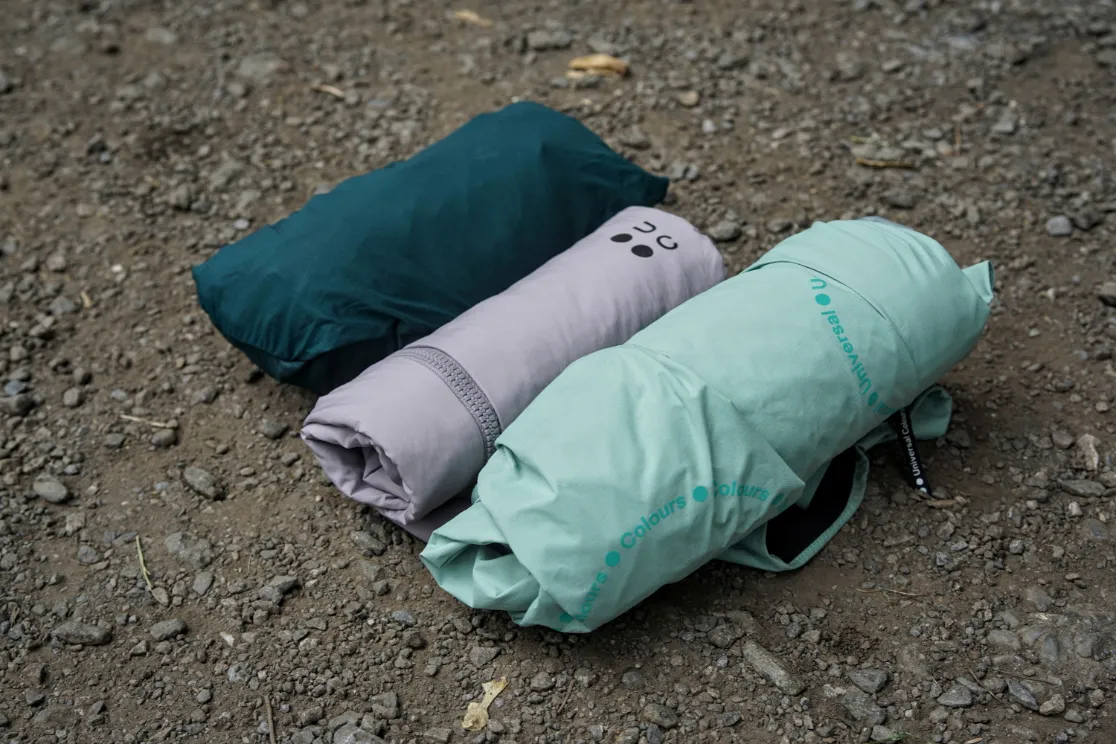
Weather conditions can change quickly and be unpredictable, especially when you head into the mountains, so having a few extra clothing items stashed is a great idea.
A lightweight packable waterproof jacket is an essential, while other items such as a neck tube or spare gloves can make a huge difference to your comfort when the temperature drops.
12. Compact first aid kit
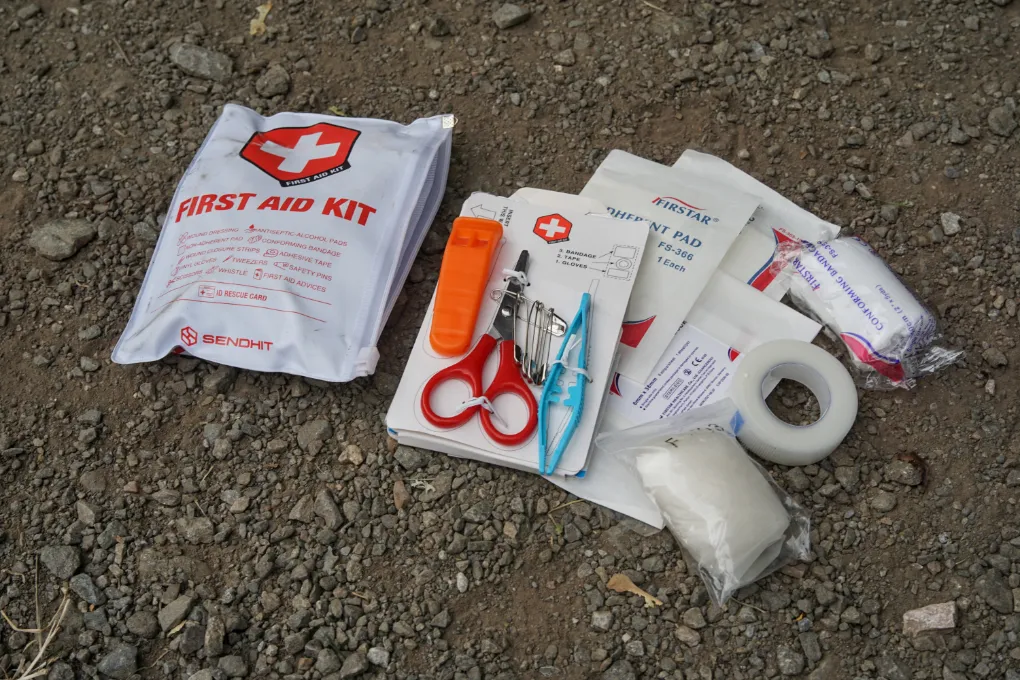
When heading to more remote areas, it’s always a good idea to carry a first aid kit, and even better if you’ve had specific training on how to use it.
There are a few brands that now offer mini first aid kits for mountain biking or other outdoor pursuits that are as light as they are small, without scrimping on the essentials.
Adverse weather conditions can accelerate seemingly minor injuries into serious situations fast, so make sure to also pack an emergency blanket and/or shelter if you’re heading far from civilisation.
13. Rear derailleur hanger
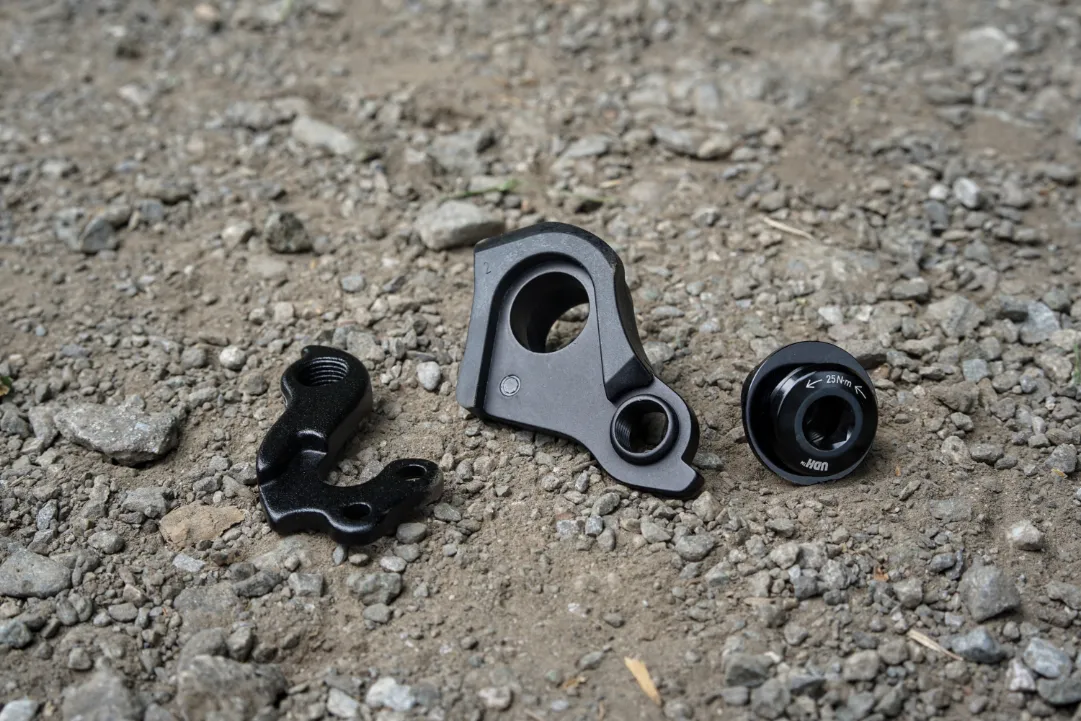
A spare derailleur hanger is an absolutely essential item in every rider's toolkit, especially because they are often specific to your bike choice. It’s a good idea to buy one when you purchase your bike so you’re always prepared.
The derailleur hanger is a sacrificial part, designed to bend or break when you crash or your bike falls onto the driveside to minimise damage to the much more complex and expensive rear derailleur.
You’ll soon know if you’ve bent a hanger by looking down the line of your drivetrain, or noticing the skipping gears from misalignment.
Accidents happen, but you can prevent this becoming a ride-ender by carrying a spare to easily replace the bent or broken derailleur hanger.
14. Quick-link
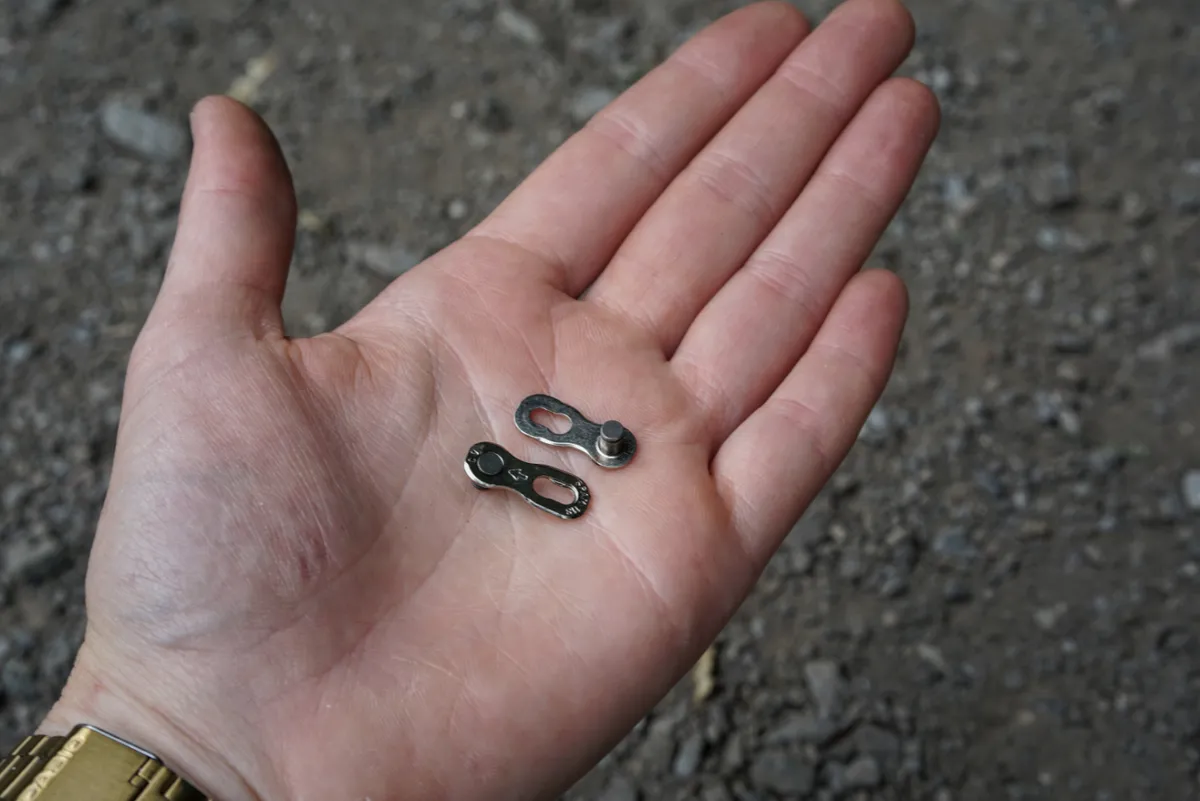
A broken chain doesn’t have to stop play. You can pick up a quick link or master link for a small price, which can help you fix your chain at the side of the trail.
Remember these are specific to the speed of your chain (e.g. 10-speed, 11-speed, 12-speed), so you’ll need to make sure you have the right one for your drivetrain.
15. Batteries and charging
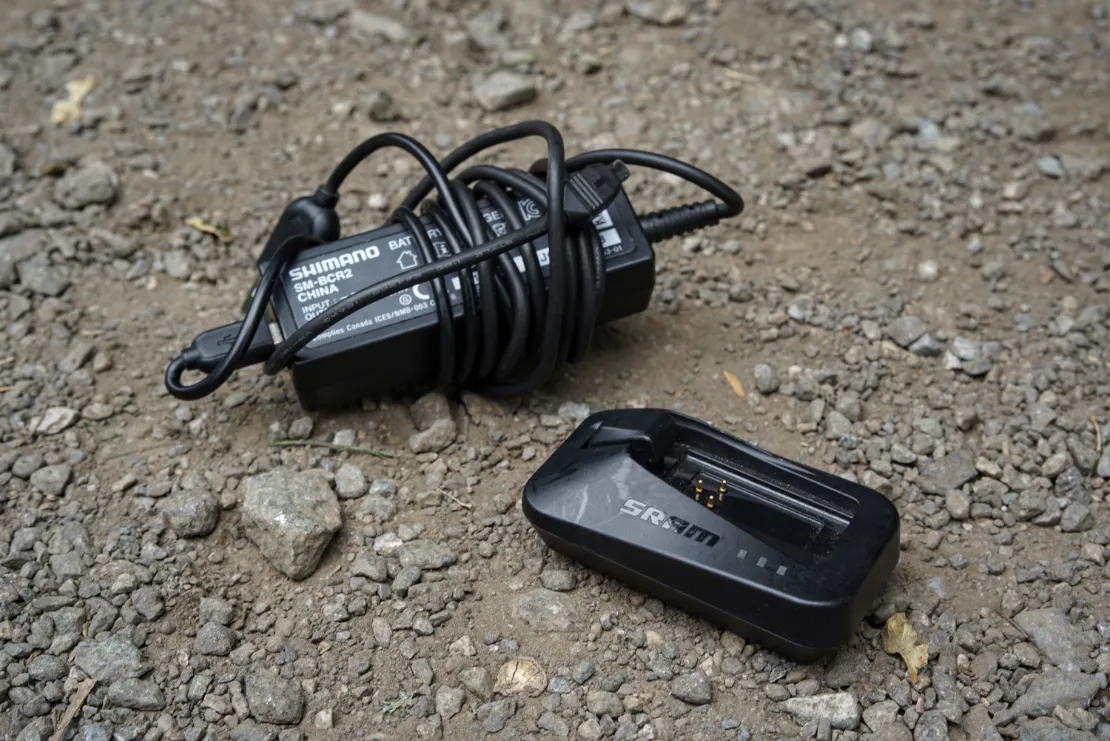
Opted for electronic gearing or an ebike? Of course, the wise thing to do would be to set off on your bike ride fully charged, but it’s not always that easy to remember.
If you have a spare battery for your SRAM AXS, or charging cable for your Di2, it’s well worth packing these to prevent you having an unexpected transition to a singlespeed setup midway through your ride.
Packing your ebike battery charger is also wise if you think you might need to recharge and there are charging opportunities along the way.
16. Cable ties
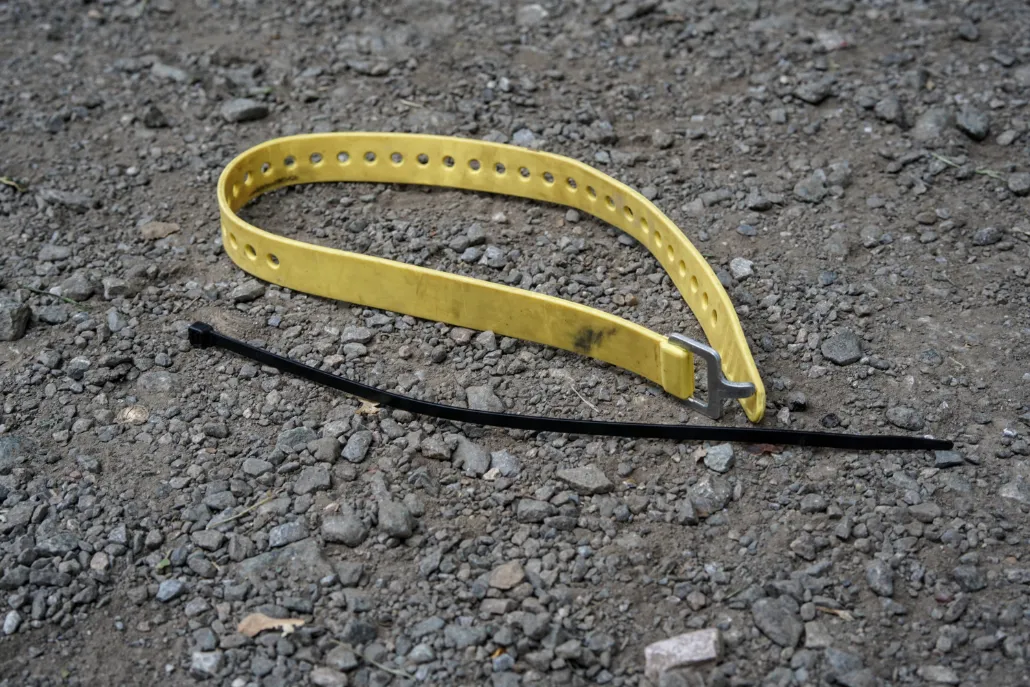
Cable-ties, or zip-ties, are one of those miracle cures for so many sticky situations. Holding bust shifters in place, securing a shoe with a broken buckle, strapping up a zip gone awry, the possibilities for (temporary) trailside repairs are endless.
It’s always worth packing a couple of cable-ties, and remember that you can reuse them by pushing down on the lever in the mechanism to release the end.
For larger items, such as bag splits or needing to carry extra equipment, a spare rubber strap can also come in handy.
17. Snacks and water
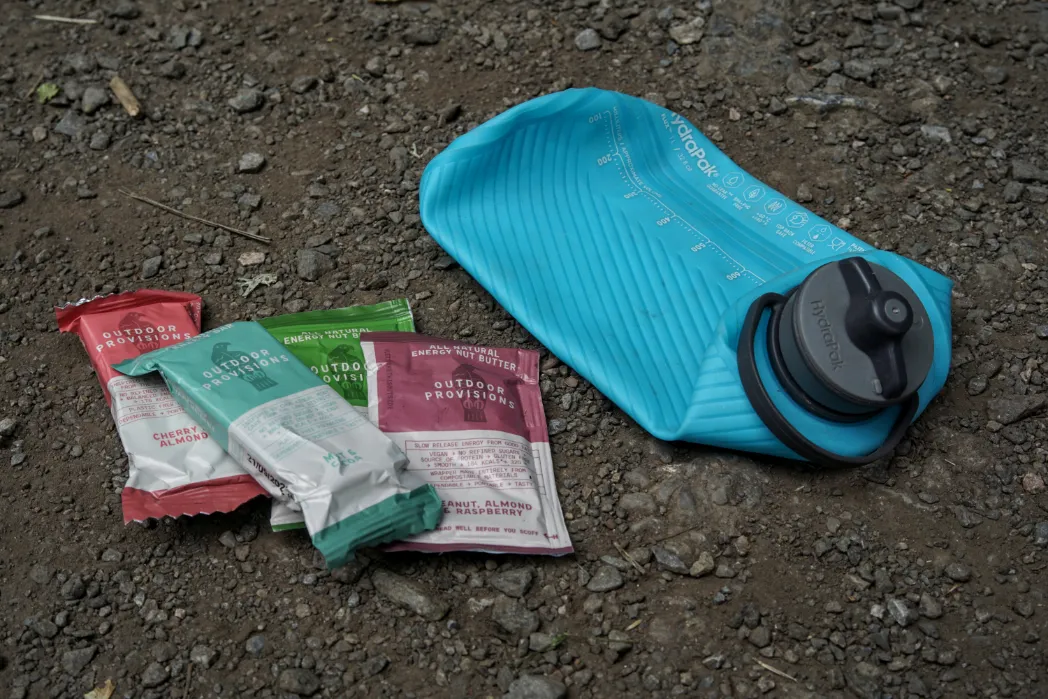
Just as a car can’t run without fuel, neither can you. To keep you going for longer rides, you’ll need to plan out how you’ll refuel on snacks and water.
You might pack your favourite bars or a few rounds of sandwiches, or you might have checked ahead to see cafes or petrol stations along your route.
It’s wise to carry more snacks than you think you’ll need, just in case. No one needs to be hangry while trying to sort a broken bike or navigate out of a bog in the mist.
If you’re heading into an area where water access might be an issue, consider taking a small water filter so you can draw from appropriate natural sources.
18. Money

A little cash stowed away in your tool kit or on your bike can come in really handy every now and then. In a world where we’ve become all too used to contactless digital payments, out in the sticks there are still plenty of places that don’t accept cards, or unexpected trailside honesty boxes where you’ll need some cash.
As a bonus, if you’re in a real pickle, some currencies' plasticised notes make for great temporary tyre boots if you’ve slashed a sidewall.
19. Emergency lights

So you’re planning on getting back before dark, but what happens if you get waylaid with a mechanical or find a delightful pub en route for an irresistible dinner stop?
Packing a set of small but bright emergency mountain biking lights to help you be seen on any road segments can make the difference between you getting home safely, and not getting home at all.
20. Saddle pack, hip pack or backpack
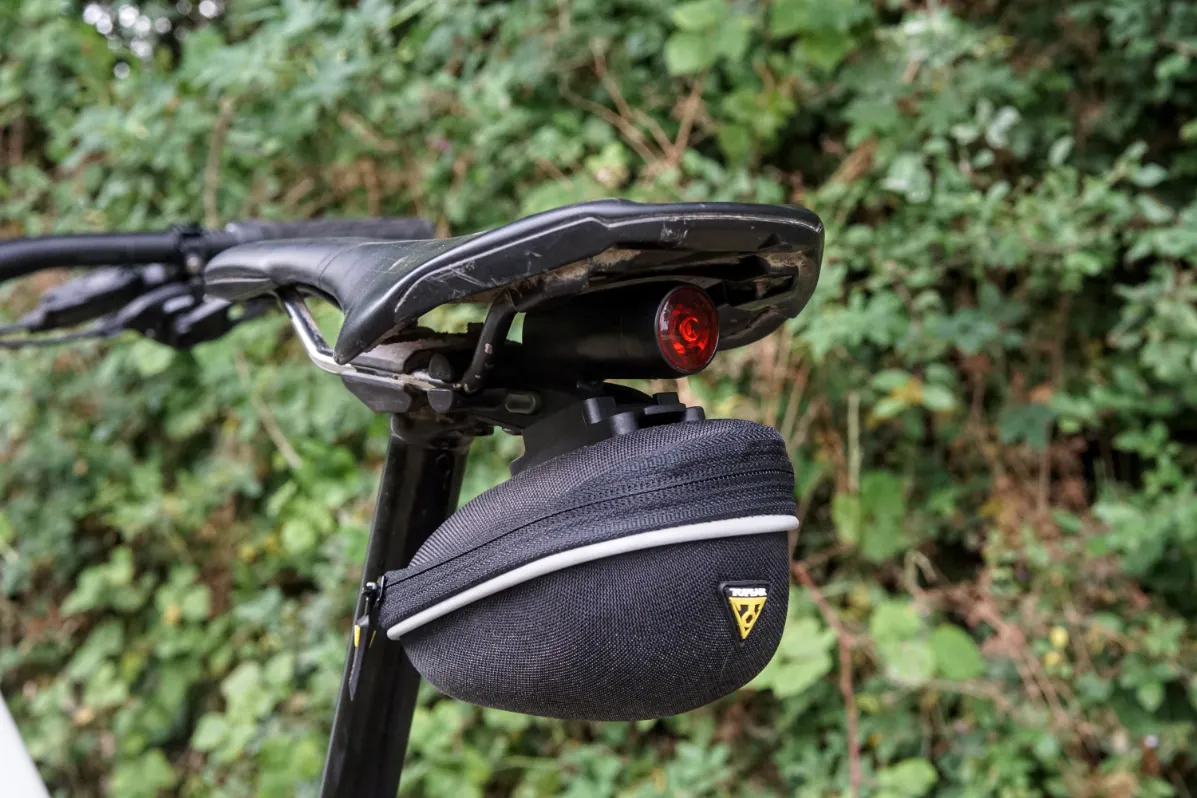
With all these essential tools and spares to stow, you’ll need somewhere to put them. Are you a hip pack fan, prefer the space offered by a hydration pack or opt for a minimalist tool roll?
Choose to attach them either to your bike or yourself as the rider, and remember that you may need to fine tune your suspension setup if you’re carrying a significant amount of extra weight.
Consider how you pack your essentials to make sure you minimise the risk of injury if you have an off along the trail; avoid stowing items such as multi-tools or keys in pockets.

